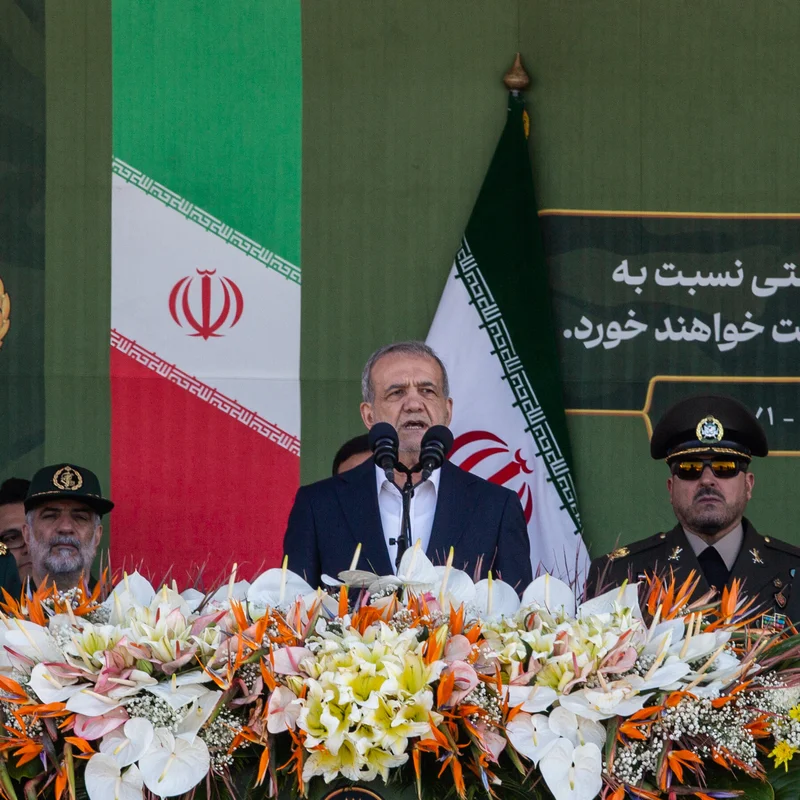In a high-stakes appeal at the United Nations General Assembly (UNGA), Iranian President Masoud Pezeshkian urged the international community to halt looming UN Security Council sanctions that could cripple Iran’s already fragile economy. His speech on September 24, 2025, comes just months after a devastating 12-day war with Israel and the U.S., which left Iran’s nuclear facilities in ruins and its currency in freefall.
Why New Sanctions Are Imminent
Britain, France, and Germany triggered a “snapback” mechanism under the 2015 Joint Comprehensive Plan of Action (JCPOA)—commonly known as the Iran nuclear deal—to reinstate UN sanctions after accusing Tehran of violating the agreement. These sanctions, set to take effect on September 28, 2025, include:
- Freezing of Iranian assets abroad
- Reimposition of arms embargoes
- Travel bans on key officials
- Restrictions on nuclear-related technology imports
European powers have laid out three non-negotiable conditions for suspending the sanctions:
✅ Conditions to Avoid Sanctions
- Grant full, immediate access to International Atomic Energy Agency (IAEA) inspectors
- Disclose the location of 400 kg of near-weapons-grade enriched uranium
- Begin serious negotiations with the U.S. and European powers
Iran’s Post-War Reality
The June 2025 conflict marked a turning point. After Israel launched airstrikes targeting Iranian military commanders and infrastructure, Iran retaliated with ballistic missiles. The U.S. then bombed Iran’s three main nuclear sites, effectively disabling its program. According to Iranian officials, over 1,000 people were killed, including 700 civilians—many of them children.
Despite the destruction, Iran maintains its nuclear program was peaceful. The IAEA has repeatedly stated it found no evidence of weaponization before the attacks.
| Timeline | Key Event | International Response |
|---|---|---|
| 2015 | Iran signs JCPOA with world powers | Sanctions lifted; IAEA monitoring begins |
| 2018 | Trump withdraws U.S. from deal | Iran resumes 60% uranium enrichment |
| June 2025 | 12-day Iran-Israel-U.S. war | Nuclear sites destroyed; civilian deaths reported |
| Sept 2025 | UNGA speech by Pezeshkian | Sanctions deadline: Sept 28 |
A Reformist’s Desperate Diplomacy
President Pezeshkian—a former heart surgeon and moderate politician—represents a reformist faction pushing for engagement with the West. In a rare move, even Iranian reformist parties are urging him to consider the unthinkable: a direct meeting with Donald Trump, despite the two nations having no formal diplomatic ties since 1979.
“The most critical thing for you to do is lay the groundwork of comprehensive negotiations with the United States and Europe,” read an open letter from Iran’s Kargozaran party.
While Pezeshkian met with French President Emmanuel Macron on the sidelines of UNGA, he stopped short of committing to talks with Washington. Meanwhile, Iran’s foreign minister, Abbas Araghchi, held preliminary discussions with IAEA chief Rafael Grossi, signaling a possible return to nuclear transparency.
What’s at Stake for North Americans?
Though geographically distant, this crisis affects North America through:
- 🛢️ Global oil markets: Sanctions could disrupt Middle East energy flows, impacting gas prices.
- 🕊️ Diplomatic precedent: U.S. credibility in nuclear nonproliferation hangs in the balance.
- 🛡️ Regional stability: Escalation risks spilling into broader conflict involving U.S. allies.
For deeper analysis on U.S.-Iran relations post-2025, see [INTERNAL_LINK:us-iran-diplomacy-post-war].
Learn more about the IAEA’s role in nuclear oversight from the International Atomic Energy Agency.




